Royal Flasher Wrasse
$49.99
-
Select Variant
The Royal Flasher Wrasse is also known as the Angular Wrasse is a vividly colored kind of wrasse that originates out of the northern Philippines and Northern Indonesia. Most often, they are found in reefs that are protected and filled with algae and corals The Royal Flasher Wrasse is found in small groups composed mostly of females. Like its alternative common title "Angular Flasher Wrasse" implies that the Royal Wrasse can be identified by its elongated with sharply sharp dorsal as well as anal fins. Female Royal Flasher Worasse has no dorsal filaments, which is common to different species of wrasses.
The Royal Flasher Wrasse exhibits sexual dichromatism. This means that the female's color is significantly different and subdued compared to the vibrant hue that the male Royal Flasher Wrasse has. When trying to attract females males, Male Royal Flasher Wrasse is likely to show its vibrantly colored fins attempts to convince that it is a potential partner. Incredibly, the coloring of the Royal Flasher Wrasse's fins will vary greatly based on the mood of the fish.
The Royal Flasher Wrasse is a peaceful as well as active species that can provide both movement and color to a reef or fish-only aquarium. A properly-filtered, established marine aquarium of 55 gallons or greater that is aquascaped and adorned with rockwork, is an ideal habitat. This Royal Flasher Wrasse does not bother corals or other invertebrates which makes it the ideal fish for your reef tank. In general, a single male of the Royal Flasher Wrasse could be kept in several females which are introduced before or in the same manner to the male. Like other flasher wrasses Royal Flasher Wrasse likes to jump, and a tightly fitting canopy is vital.
The diet of the royal flasher wrasse needs to include vitamin-enriched frozen mysis Shrimp as well as vitamin-enriched brine shrimp that are frozen, as well as other meaty food items, in addition to the highest quality of sea flake as well as marine pellets.
Approximate Size of Purchase: Small: 1" to 2"; Medium: 2" to 3"; Large 3" to 4"
- Description
- Additional Information
- Reviews
Royal Flasher Wrasse Info
The Royal Flasher Wrasse (Paracheilinus angulatus) has stunning coloration as well as hardiness and activity levels, making them extremely popular in the hobby of aquariums. When you are starting a new aquarium the Carpenter's Wrasse is able to live in groups. They should be the first fish added because they can be harmed by other fish. Additionally, females should be introduced prior to males due to the same reason. Males are slightly bigger and females are lighter. Their colors will change and flash when they are in courtship. It is recommended to have a secure lid since they are known for jumping out. Their diet should consist of frozen meaty items such as brine shrimp and marine pellets as well as flakes. This wrasse has a very high metabolism and is recommended to eat a few smaller meals, rather than two large meals per day. They are small in adult size of 3" this is another explanation they are so sought-after. Their an orange coloration, with red and blue horizontal stripes as well as an underside that is yellow/pink.
size
Large, Medium, Small
Units
1
Weight
6 lbs
Dimensions
1 × 1 × 1 in

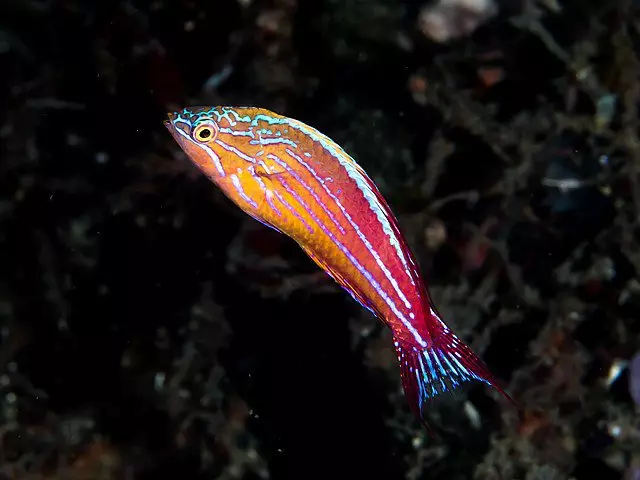
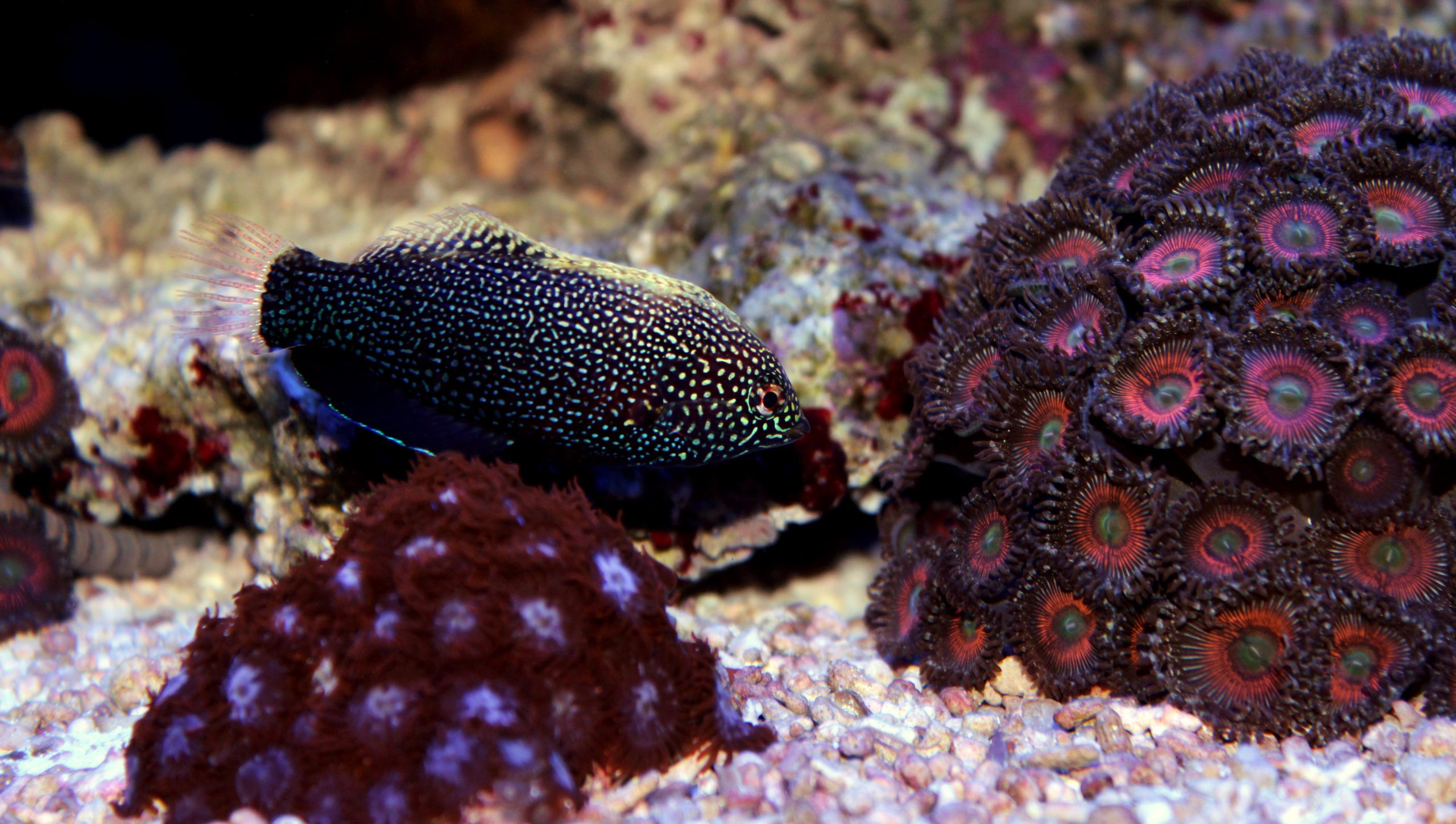
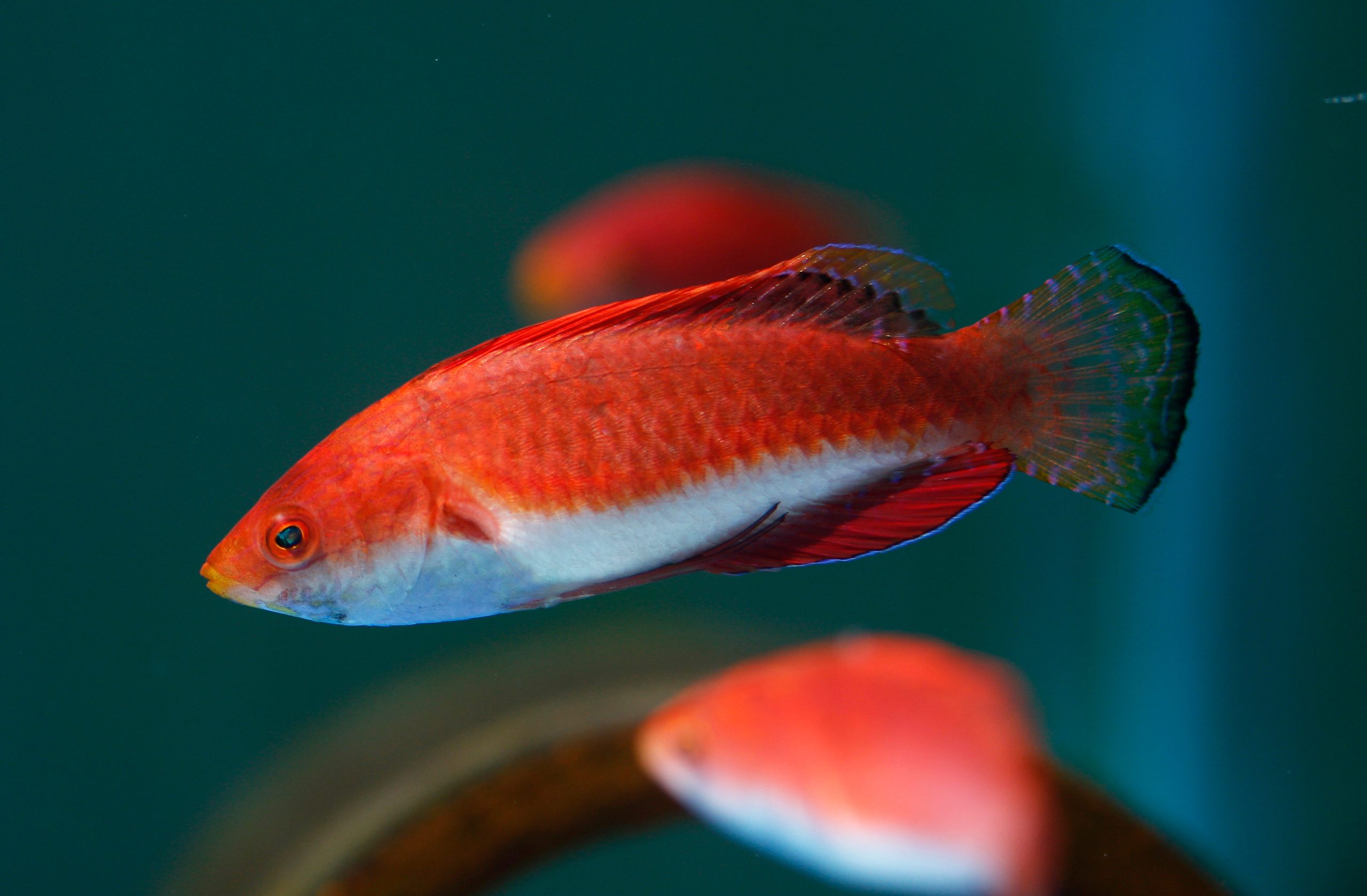
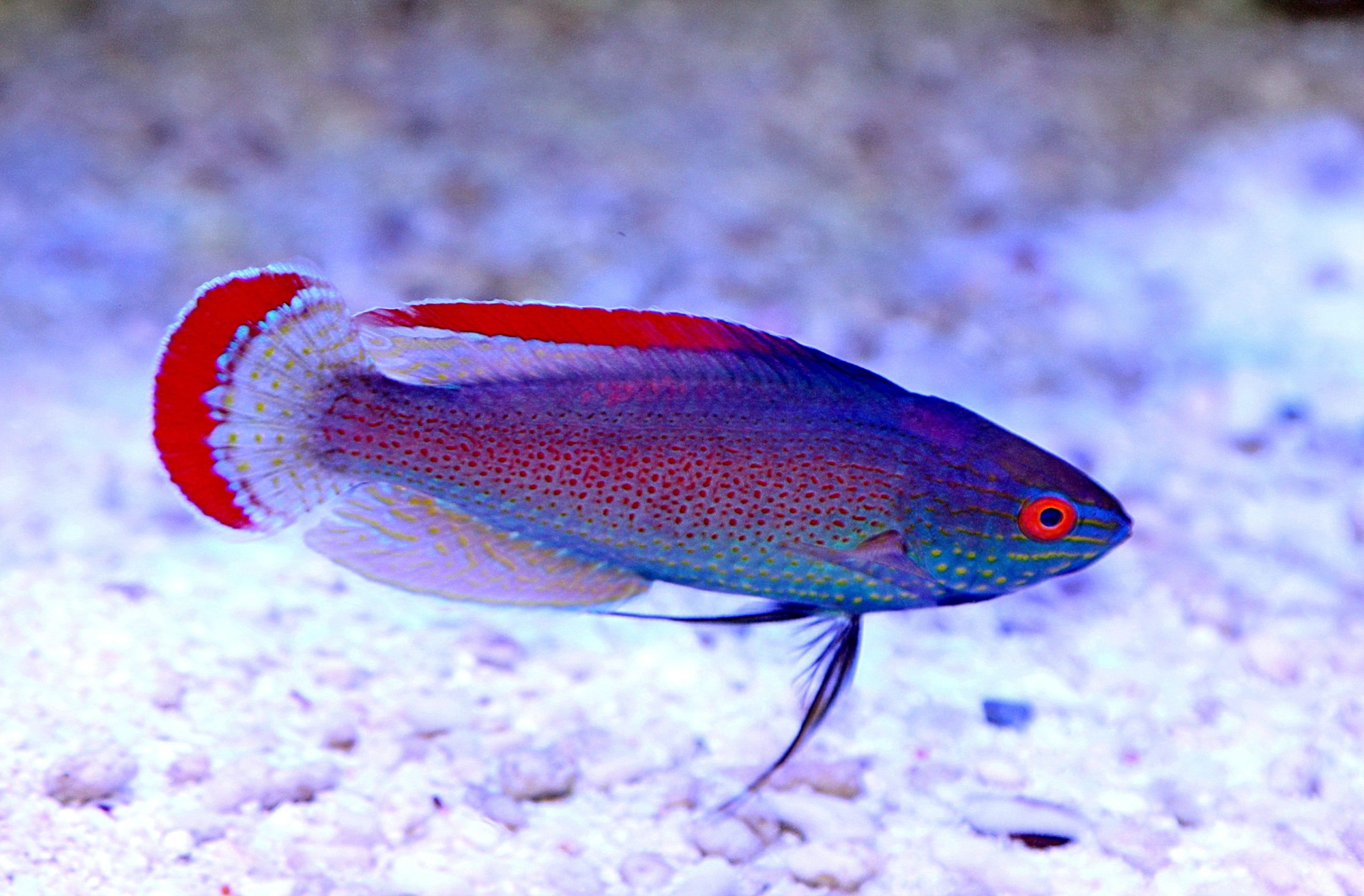
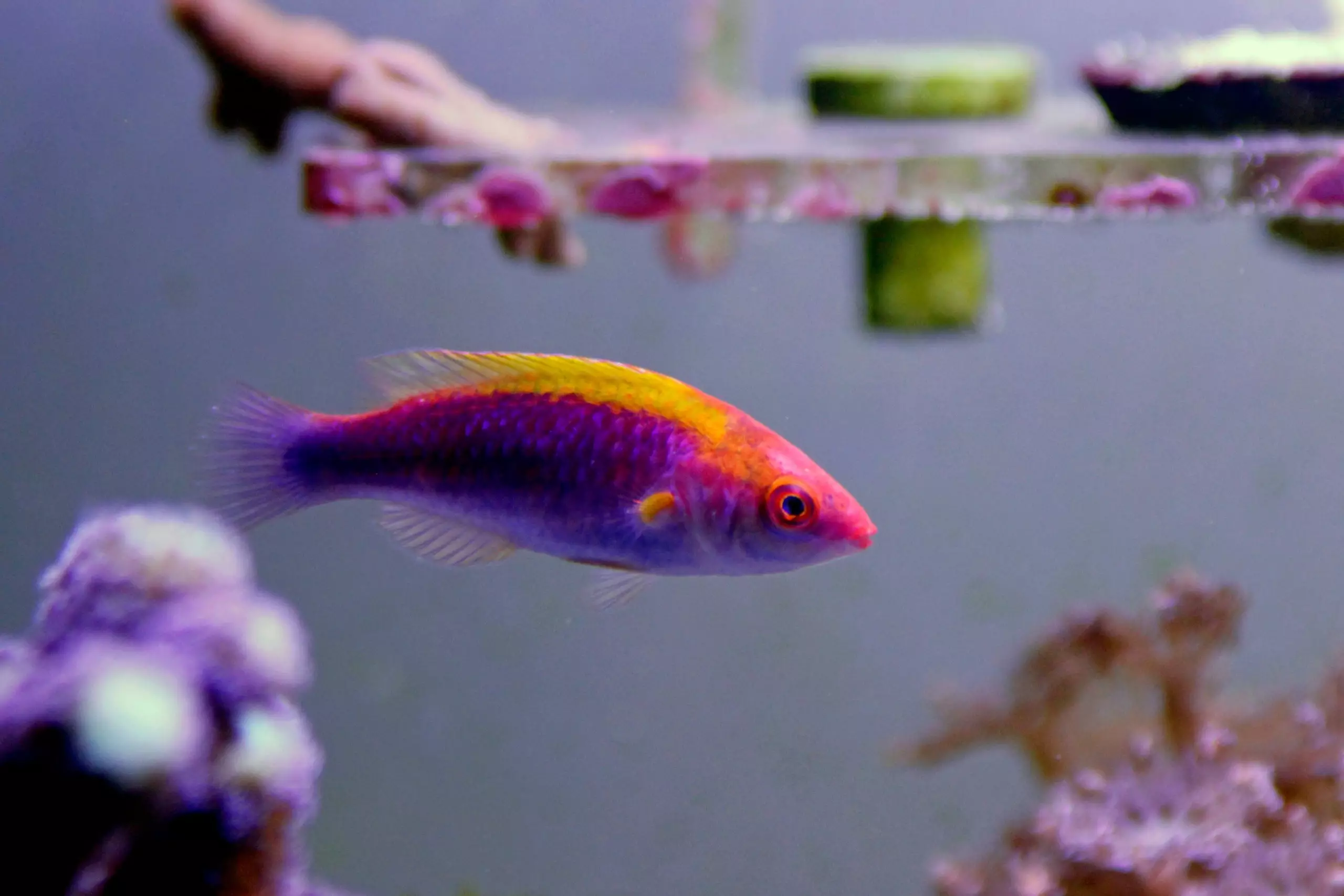
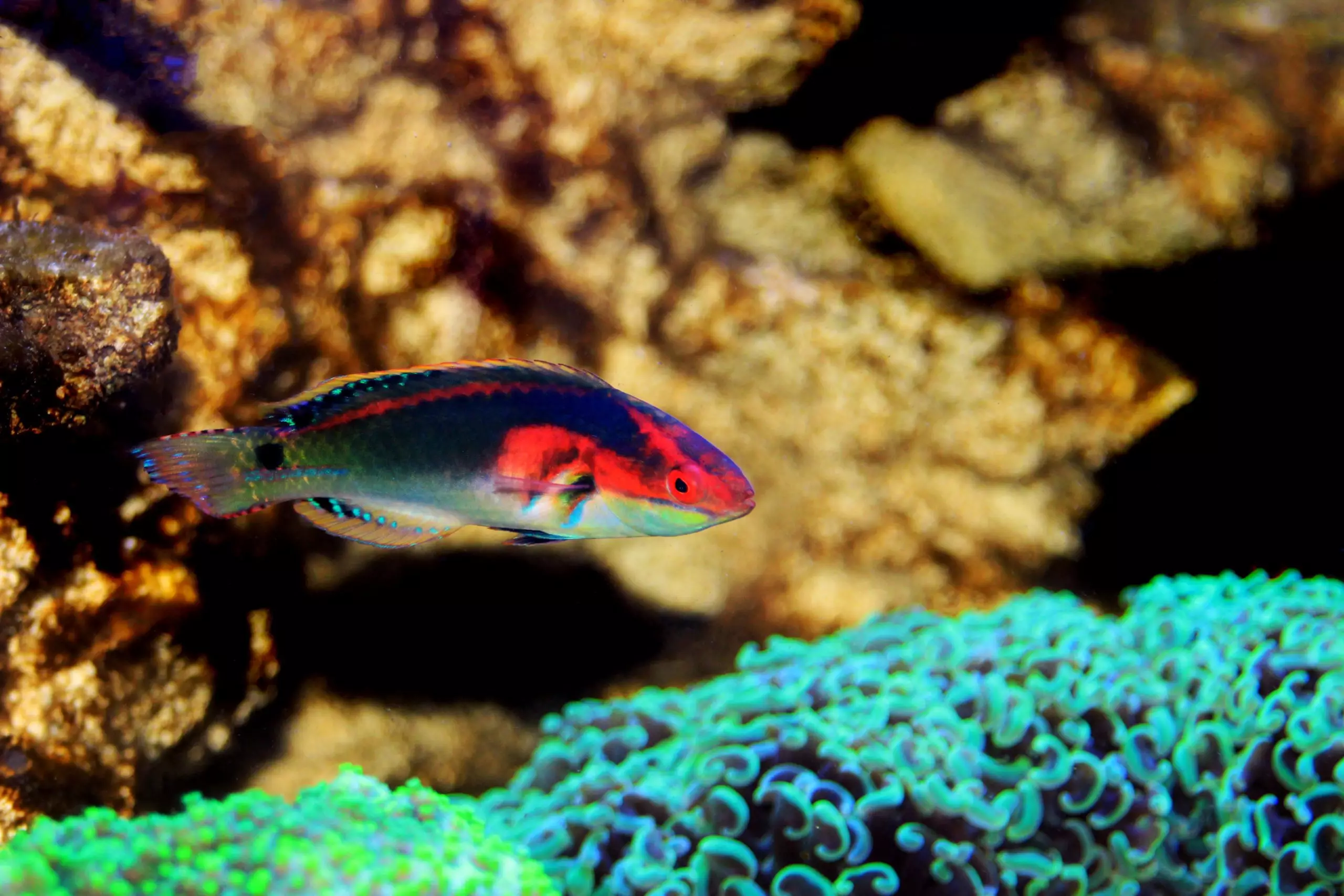
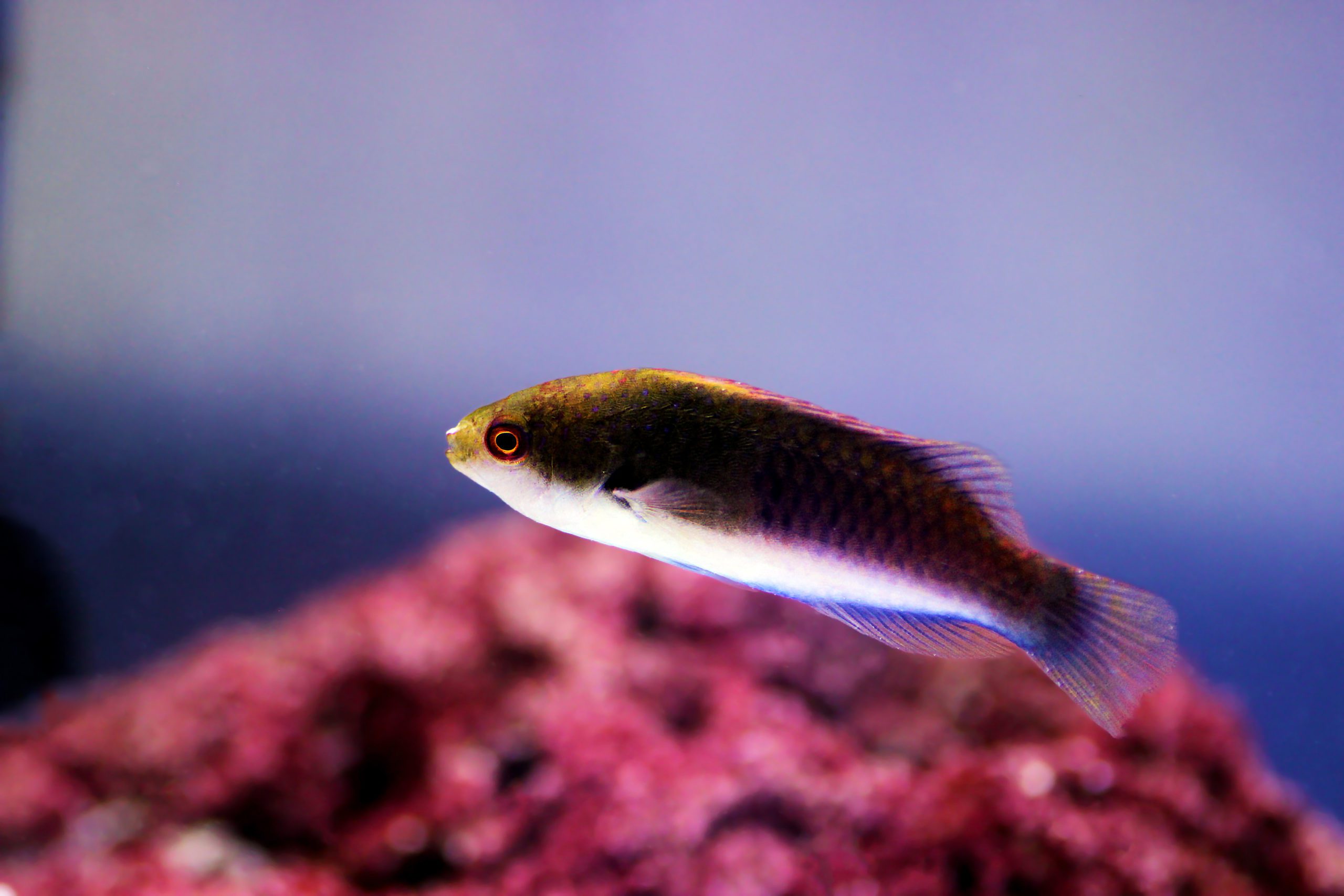

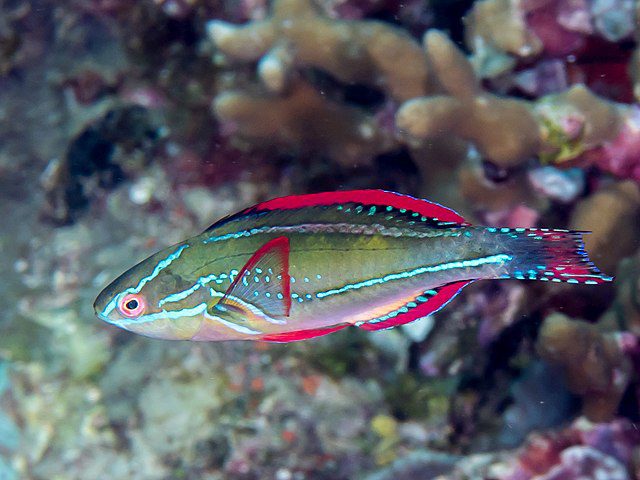

Reviews
There are no reviews yet.